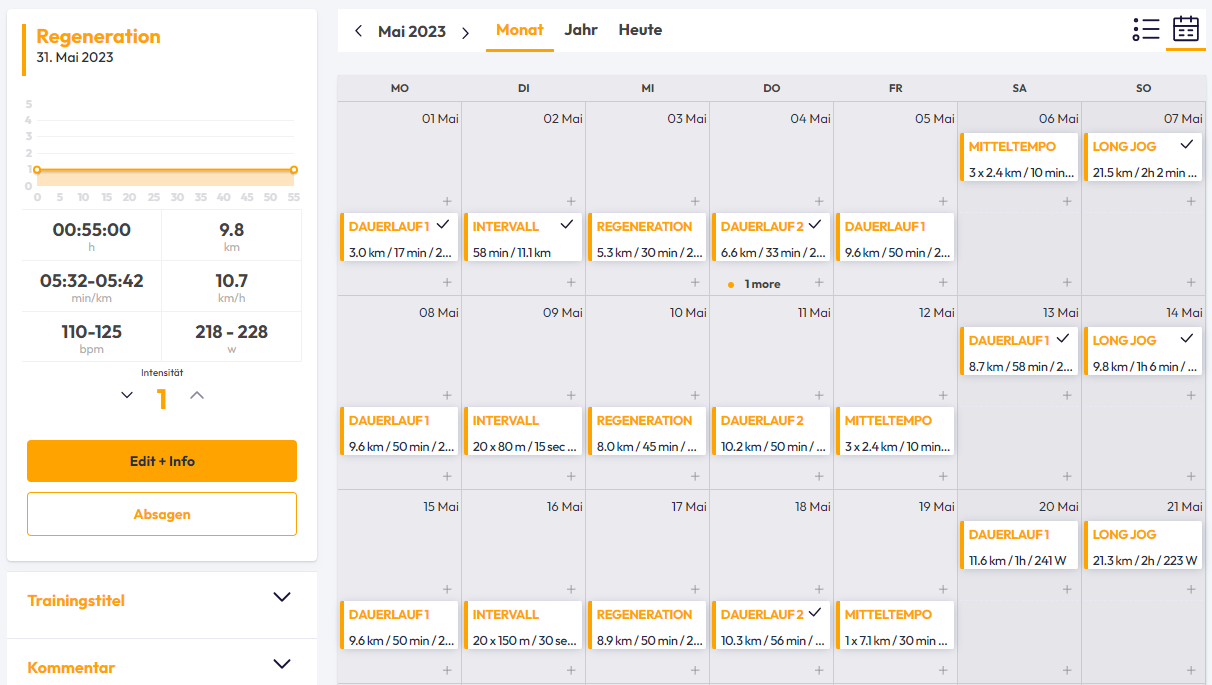The marathon is one of the most physically and mentally demanding athletic competitions. Proper preparation and constant training are the key to success. Obviously, the risk of making mistakes is high, which is why we would like to share with you the following article: 7 most common mistakes to avoid when preparing for a marathon.
1. Excessive increase in training load
One of the first mistakes committed in marathon preparation is to increase training loads too quickly and abruptly. For example, two months before the big day you feel well, and you decide to increase your training sessions from 3 to 5 per week. The body will not have time to adapt to the new load, and as a result you run the risk of overtraining, muscular lesions or injuries.
The suggestion is to adapt the training plan to your physical condition and to increase the load from week to week by a maximum of 10%. The additional workouts at the beginning should be short and of low intensity. You can also occasionally include a week in which you run less than usual, which will give your body a chance to regenerate.
And don’t forget that in the run-up to race day, the training load should be decreased, not increased! Find out more about this pre-race unloading phase in our last article on Tapering.
2. Running speed too high
Remember, slow and steady wins the race! Don’t make up for missed training with sessions at too high a speed, or increase the pace too much for no particular reason. The key to marathon training is basic endurance. Marathon preparation consists mainly of optimising variables such as running economy and endurance, power, lactate. Follow the pace that suits you in training, and stick to it in the race.
The race is the mirror of your training! Don’t think you are superheroes on competition day, and that you can exceed your limits by running at a pace never seen in training. The opponents, the crowd, the excitement, the atmosphere, the adrenaline… all these factors will certainly motivate you, but they can also make you think you can run faster than normal. Don’t make this mistake, or you will regret it very soon in the race. Be honest with yourself, know what you have done in the previous months, and the difficulties that await you in reaching 42,195 km. Adjust your pace accordingly, and only race if you are really ready!
3. No training planning
Another frequent mistake is to make no planning at all. Since running is an individual sport, many people think they can train on their own, underestimating the complexity of this discipline. Running is a basic motor pattern, so it is sometimes difficult to accept that we need someone to ‘teach us how to run’. But as in team sports there is always a coach, also in this case a coach is necessary to plan training and races properly. Personalised training plans from running.COACH are ideal for achieving your running goals.

Knowing how to plan regeneration phases is also essential. Training progress occurs mainly when the body recovers, i.e. the training adaptation phase. Give your body enough time to regenerate, it will be grateful!
4. Monotony
Many runners think that in order to prepare for a marathon, it is only necessary to run long and flat. This logic is wrong, because progress will only be noticed by varying the type and intensity of training. We therefore recommend adding interval sessions, medium tempo runs, Fartleks or hill runs (7 advantages of hill/mountain running training).
You should not only strive for quantity, but also quality by working at a faster pace. If you always run at the same pace, your body will get used to it and you will hardly be able to improve any further. Get your body out of its comfort zone and create new training stimuli to optimise the regenerative process (in which the greatest progress occurs).
Also, it is not beneficial to do a three-hour training session every week. The leg muscles are constantly trying to recover from the stresses and knocks they have taken during a long training session, and over time this can have a negative effect on fitness. Tendons, joints and ligaments become overstressed, increasing the risk of injury. With running.COACH, the long runs are integrated into the plan periodically – so the distance and duration of the long runs is built up over several weeks before the process starts all over again. And trust your training plan – if it tells you to run slower than you actually can, then listen to the plan. Slower is often better for long runs!
5. Nutrition and hydration
Further extremely relevant aspects of preparing properly for a marathon are nutrition and hydration. It is important to have a structured plan and to follow it, especially the two weeks before the competition. As the race is very long, it is necessary to eat well to have sufficient reserves and to supplement lost micronutrients. You need the right balance, and this is often not easy to find. Relying on a specialised nutritionist may be the right solution to obtain an effective plan that is customised to your characteristics. The goal is to have enough strength to tackle the 42,195 km and not end up halfway through the race with no energy left or with intestinal problems. Remember that carbohydrates are the basis of an athlete’s diet as the primary source of energy, but a minimum intake of protein and fat is also necessary.
Below you will find interesting informative articles on nutrition in preparation for a marathon, hydration and what to do to avoid stomach problems during the race.
- Nutrition and marathon preparation
- Avoiding dehydration while running – how much fluid should you consume?
- Hydration and Running: 3 Common Mistakes
- Drinking while running – how much, when and what?
- Stomach problems during running
And during long jog sessions, don’t wait until the end of training to drink, hydrate along the route and repeat the same pattern during the race! The feeling of thirst is a signal that often arrives later than our body’s actual need. Also, test any breakfasts, sports drinks or gels during training sessions: this way you can be sure that you will not experience any problems during the race.
6. Forgetting muscle strengthening and mobility
To run a marathon, in addition to basic endurance you also need muscle strength. A common mistake is to underestimate this aspect. Although it may be boring, strengthening gymnastics is essential to overcome the prolonged effort on race day. It is not strictly necessary to go to the gym; there are many exercises you can do yourself at home (exercises with elastic mini-bands). Do not exceed the load, otherwise the effect will be counterproductive.
Also, don’t forget to always stretch! This practice, which is often neglected, is essential for muscle elasticity, joint mobility and to avoid injuries during training.
7. Suitable equipment
Finally, the choice of suitable, race-specific shoes is crucial. Typically, running shoes wear out between 600 and 800 kilometres. Make sure you wear shoes that are comfortable for your feet and of quality to avoid injuries or problems with your musculoskeletal system. The advice is to go to a specialised shop with qualified staff who can guide you in the most suitable purchase for you (The Myth of Running Shoes – What to consider when buying?).
As a general rule, it is best to have at least two different models, and to alternate them according to your training. In this way, your muscles will be subjected to a wider range of stimuli.
Create a personalized and dynamic training plan with running.COACH that, starting from your current fitness level, will prepare you optimally for your running goals. Try running.COACH for free for two weeks after the first login!



